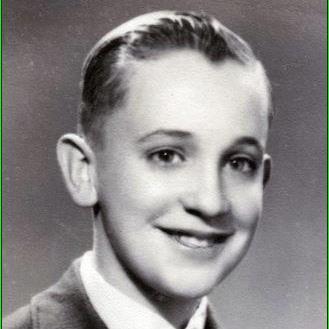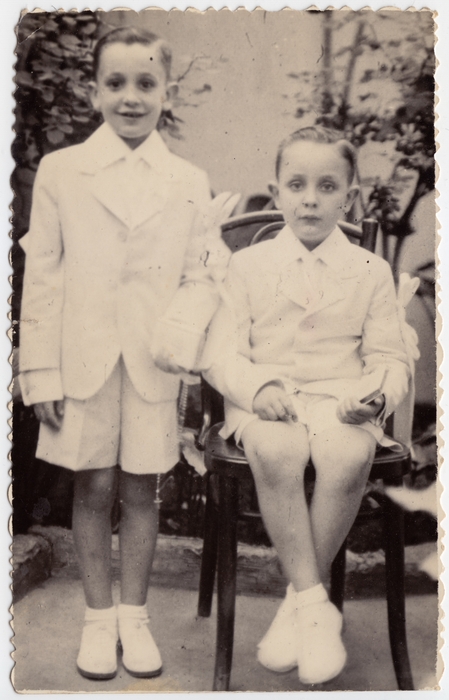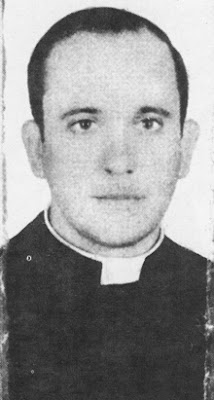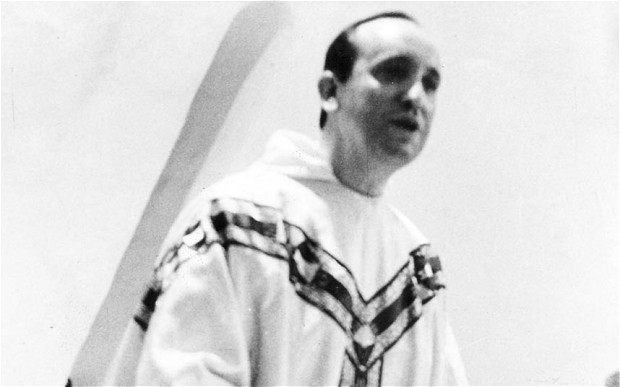The rectory behind Boston Cathedral has scaffolding and is in the process of
being partially re-built. As I walk towards it, the interior locution given
to St Francis from God rings in my ears, “Francis, re-build my church”. This
is the home of Cardinal Seán Patrick O’Malley, the only Franciscan in the
College of Cardinals.
Ushered in by his secretary, Fr Kickham, I set up for the interview in a
plush drawing room that has a very energetic cat jumping around. Cardinal
O’Malley, dressed in his trademark brown habit with Rosary beads around his
waist strolls slowly in.
“It’s so good to see you!” I gush, overflowing with sincere verve.
“Really?” Cardinal Seán asks unassumingly, as he sits down with a mug of
cocoa.
“Yes!” I exclaim, and resist the temptation to spout that it’s an honour to
interview the cardinal who was Papabile in the 2013 Conclave and has just
been made an advisor on curial reform.
Our first order of business is to discuss our shared Irishness, and people
that we know from West Cork. But that’s where our similarities end. From the
minute that I plonk my Dictaphone on the table, it’s clear that Cardinal
O’Malley and I are polar-opposite personalities. I am a restless,
can’t-stop-moving person and run on nervous energy. Cardinal O’Malley is
still, calm and radiates a real and palpable peacefulness. He’s much more
easy-going Irish than me. A man of such high standing could be haughty, but
he insists on being called Cardinal Seán. A west of Ireland man, he says “my
mother’s family is from Mayo, and my father’s family is from Clare”. He has
that pale, almost translucent Irish skin and freckles dot his broad
forehead. And by doing this interview, this “super cardinal” is joining the
struggle to keep abortion out of Ireland. During the days before Cardinal
Seán and I agreed that this interview would be a discussion on rebutting the
pro-abortion bombast that is being used to patronise and silence the Irish
pro-life voice.
His cool demeanour disappears on being asked why Ireland, a small island,
should resist abortion legislation that the rest of the world has largely
implemented. “Abortion is the taking of an innocent human life, everyone
should resist abortion! Ireland has the good fortune, in part thanks to
Catholic sensibilities, that her people have been opposed to abortion
despite the great pressure that they have come under from secularising
forces,” he says with fervour.
Taking his lead on the subject of “great pressure” from “secularising
forces”, I suggest that since the X Case was going through the Irish courts in
1992, one manipulative scheme used by pro-abortion factions is to belittle
Ireland’s ban on abortion as primitive and archaic. Cardinal O´Malley does
not entertain the idea that Ireland is “archaic”, and states firmly,
“Ireland should be very proud of its pro-life heritage and how traditionally
there has been great importance given to human life.” Tapping himself on the
chest, he emphasises, “I am very proud that in Ireland every life counts,
even when it is so vulnerable like the unborn. I hope that Ireland will
continue to stand up against the pressures – I know the pressures are there.
Pressure to legislate for abortion is a dehumanising force in our world.”
The tactic of portraying Ireland and pro-lifers as old-fashioned prompts
Cardinal O’Malley to reminisce that at the time of abortion legislation in
America, there was a popular opinion that “people opposed to abortion will
die off, they’ll go away. But, of course, 40 years later the pro-abortion
movement is on the run, they see that the number of pro-life people has
increased and is getting younger.”
But just because abortions are not performed in Ireland, does not mean that
Irish girls are not having abortions. What does he think of the thousands of
girls who go across the Irish Sea to England for abortions? One argument
used by pro-choice campaigners in Ireland is that women will have abortions
anyway, and that it is anti-woman that they are ‘forced’ to travel. Speaking
very gently, he counters this: “the fact that they actually have to leave
Ireland to have an abortion, is a deterrent and it also teaches people that
it is wrong. The laws have a function of teaching what is right and wrong.
And simply because someone is going to do something, does not mean that we
have to facilitate it, condone it, or encourage it. Changing the laws would
facilitate, condone and encourage abortion in Ireland.” And for wider Irish
society, why would it be good for abortion to remain illegal? Cardinal Seán
answers in his deep voice: “Abortion undermines people’s humanity and makes
us insensitive to the suffering of others.” I tell Cardinal Seán that Irish
women are being challenged that they are not in control of their bodies,
because abortion is not available on request. He raises his voice: “It is a
justification that a woman can do what she wants with her body, but what
about the baby’s body? And how about the gender selection of abortions that
take place? Where are the feminists arguing against abortion for baby girls?
Here in America, we have not been able to put in place legislation that
would prevent abortions that are done because the baby is a girl.”
The most pressing issue is the mendacious-sounding name, “The Protection of
Life During Pregnancy”, a piece of legislation that, if enacted, would allow
for suicidal women to be given an abortion. There is no time limit
stipulation in the Bill, so theoretically a woman who is in the latest
stages of pregnancy, but who has demonstrated suicidal tendencies to three
doctors, may get an abortion. The syllogism being that a woman who may be
suicidal because of her pregnancy must be rid of the baby in order to get
better. He rejects the idea that abortion is the necessary solution: “If any
woman is suicidal, she must be given treatment for depression. If she has an
abortion, there are greater chances that she will be depressed and suicidal
as a result of having had an abortion.
“There are many cases of women who have had abortions, then nine months
after the child was conceived, around the time that the child would have
been born, the woman goes into a false labour. Biologically she is aware
that she would have been having a child at that time.”
It’s all well and good to condemn abortion when the mother is depressed at
the thought of raising a baby, but does Cardinal Seán have an alternative? I
expect an answer based on better childcare possibilities and monetary
support for single mothers. But he responds quickly with, “one thing that
I’m very focused on right now is how we might market adoption better. I am
realising how negative the attitude is towards adoption. We can say very
glibly, ‘adoption, not abortion’. But when a woman is in a difficult
pregnancy, she doesn’t want to hear that, and she sees adoption as a
continuation of her problems, and that she will be a bad mother by giving
her child away, where the child might be abused or discriminated against. We
need to change that attitude, because otherwise we will never be able to
counter abortion.”
This answer stumps me, because I grew up not knowing any person my own age
who was adopted, and I was told it was a practice of the past. I want to
know why he has such a positive view of adoption. “Growing up here in the
States, we all had friends who were adopted children. In today’s world, many
Americans do not know anyone who was adopted. This is no longer something
that American women do – give a child up for adoption.
“There is one adoption for every hundred abortions, and at the same time you
have all these childless couples who are so anxious for a baby, and many of
them do IVF, where human life is being destroyed in ‘extra embryos’.” How
does he plan to encourage adoption? “We have to do a better job of showing
the positive side of adoption and making it more user-friendly for the
mother.”
But Cardinal Seán is not a textbook ideology-only pro-lifer, but has vast
experience in the one-to-one care of pregnant women. “My heart is always
with women in difficult pregnancies. Sometimes they are in dire straits.
When I was in Washington, I ran a social service agency where we had a
medical clinic and the people that we served were undocumented, and did not
have access to insurance, and so they were under a lot of pressure to have
abortions. If an illegal immigrant has no insurance, the medical bills cost
thousands of dollars. We arranged for their medical expenses to be taken
care of, and for their pre-natal care to be provided.
“When I was bishop of the West Indies, we started a pre-natal care programme
there to help teenage girls. Before the programme, the West Indies had one
of the highest infant mortality rates, and so over the years, we reduced the
infant mortality rate to zero”.
Offering my congratulations to Cardinal Seán for this great achievement,
which showed great willpower and perseverance, we take a reprieve from
talking about pro-life, we turn our attention to Padre Pio, and compare our
devotion to his fellow Franciscan, the mystic who used to describe himself
as “a simple friar who prays”. He never met Padre Pio, but has celebrated
Mass at his tomb, and visited San Giovanna di Rotondo many times. His
favourite account of St Pio’s intercession goes back to the time that
Blessed John Paul II was Archbishop of Krakow and he wrote a letter to Padre
Pio, asking his prayers for his dear friend Wanda Półtawska. Wanda was a
professor at Krakow University, and was dying of throat cancer. Apparently,
Padre Pio held up the letter from the then Archbishop Wojtyła and said that
the Polish archbishop was destined for great things, and that he would do
his utmost to win a miraculous cure for Wanda. Wanda made a full recovery.
The reason that Cardinal Seán likes this account so much is because, “it’s
about John Paul II in contact with Padre Pio, the two saints coming
together”.
What is it about Padre Pio, the priest, that impresses Cardinal Seán? “I am
in awe of Padre Pio’s ministry in the Confessional. Much like the Devine
Mercy devotion there is a hunger for mercy in the world. Padre Pio, in the
Confessional, was a manifestation of the merciful Christ. His whole ministry
was healing people’s souls in the Confessional and his concern for the sick
when he arranged for the Hospital for the Relief of Suffering to be built.”
This generation of Catholics will know a re-awakening of Franciscan
spirituality, thanks to Pope Francis. They met four years ago in Buenos
Aires, and have always spoken in Spanish. Cardinal Seán writes to Pope
Francis as often as possible and mentions that since he has been made an
advisor on curial reform: “I feel a certain obligation to keep in constant
contact with the Pope”. But he concedes that “there just hasn’t been much
time” and he is still getting to grips with his new appointment as a super
cardinal. When I suggest that it’s been an exhausting, emotionally-draining
time, he says, “It’s been like trying to drink water from a fire hydrant!”
April has been an exceptionally testing time for Boston, and he has spent
much time in the company of the victims, and tells me that he visited the
little sister of Martin Richard. At the tender age of six, she has lost her
foot and has severe burns.
Throughout these busy weeks, Cardinal Seán has continued to update his blog,
a platform where he showcases positive events in the Church. He dictates his
blog to his secretary, but I want to know why he gives his blog priority,
even during the most demanding of times.
“Everyone talks about the bad things that happen in Boston. My blog gives me
the opportunity to talk about the good things that are happening in Boston.”
We discuss the pros and cons of blogs, that they can be used as tools to
smear others but they can also be places where people can have life-changing
encounters with the Catholic faith. Cardinal O’Malley comes down on the side
that blogs are a good thing, and concludes, “there is so much good to be
accomplished with blogs. Some blogs can be great a great instrument of
Catholic evangelisation.”
We finish our conversation, and walk out to the entrance of the rectory. On
saying our goodbyes, I have an instinct to ask Cardinal O’Malley’s prayers
for a friend of mine who is suffering after an abortion and gets distressed
every week when the day that she had her abortion comes round. “I will, of
course, pray for her. You can be sure that my prayers are with her,” he says
earnestly.
It is a great boon for the pro-lifers of the world, and not just in Ireland,
that Pope Francis has appointed Cardinal O’Malley one of the “super
Cardinals”, or the “G8”. Not just because he has hands on experience in
coming to the aid of pregnant mothers, but because he has resolute
determination to speak out on behalf of small Catholic countries like
Ireland. We can take comfort that with an advisor like Cardinal O’Malley,
pro-life matters will be top of the agenda during Pope Francis’s
pontificate.
This interview appears in the 10th May edition of The Catholic Herald
Mary O’Regan is a journalist based in London and a TV producer on a forthcoming show Extraordinary Faith.
































